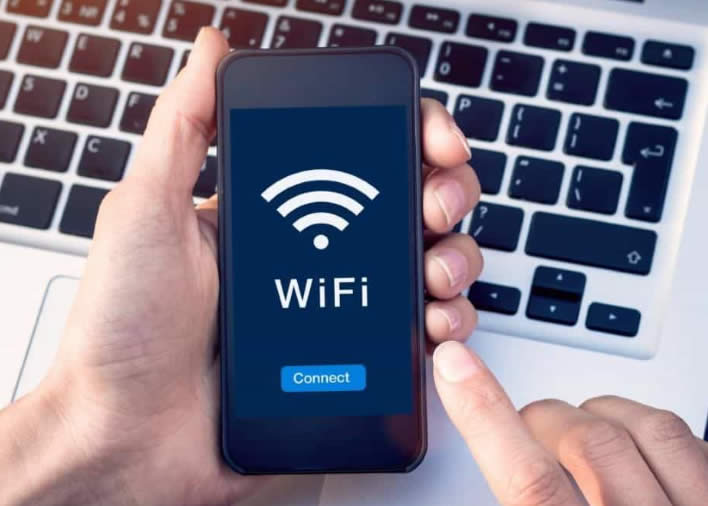How to Choose the Wireless Internet Hotspots for Seamless Internet Anywhere
In today’s mobile world, wireless hotspots offer reliable internet for remote work and travel. This guide helps you choose the best option by considering speed, battery life, and compatibility, and highlights top-rated U.S. products for seamless connectivity.

Key Considerations When Choosing a Wireless Internet Hotspot
When selecting a wireless hotspot, consider the following factors:
- Network Compatibility: Check if the hotspot is compatible with your mobile carrier or if it’s unlocked for multiple carriers. This is essential if you plan to use SIM cards from various providers.
- Speed and Performance: Make sure the device supports high-speed connections, such as 4G LTE or 5G, depending on the type of networks available in your location.
- Battery Life: A portable hotspot needs good battery life to stay functional throughout the day. Some hotspots offer batteries that can last up to 24 hours.
- Device Capacity: If you plan to connect multiple devices, consider a hotspot that supports several simultaneous connections.
- Portability: Evaluate the size and weight of the hotspot, especially if you are frequently on the move.
Top 10 Wireless Internet Hotspots in the U.S.
Here’s a table listing the top-rated hotspots in the U.S., highlighting their features and approximate pricing:
| Product | Carrier/Network | Speed | Battery Life | Device Capacity | Price Range |
|---|---|---|---|---|---|
| Netgear Nighthawk M5 | AT&T, Unlocked | 5G, 4G LTE fallback | 13 hours | 32 devices | $699 |
| Skyroam Solis X | Unlocked (Global) | 4G LTE | 16 hours | 10 devices | $179 |
| Inseego MiFi M2100 | Verizon | 5G, 4G LTE fallback | 24 hours | 30 devices | $399 |
| GlocalMe G4 Pro | Unlocked (Global) | 4G LTE | 15 hours | 10 devices | $169 |
| Alcatel LinkZone 2 | T-Mobile | 4G LTE | 14 hours | 16 devices | $90 |
| Verizon Jetpack MiFi 8800L | Verizon | 4G LTE | 24 hours | 15 devices | $199 |
| Huawei E5785 | Unlocked (Global) | 4G LTE | 12 hours | 16 devices | $125 |
| Netgear AirCard 797 | Unlocked (Global) | 4G LTE | 11 hours | 15 devices | $149 |
| ZTE Velocity | AT&T, Unlocked | 4G LTE | 10 hours | 10 devices | $129 |
| TP-Link M7350 | Unlocked (Global) | 4G LTE | 8 hours | 10 devices | $79 |
Q&A on Wireless Hotspots
Q1: How does a wireless hotspot differ from using a mobile phone as a hotspot?
A1: A wireless hotspot typically offers better battery life, stronger connectivity for multiple devices, and does not tie up your phone’s data or battery. Dedicated hotspots are designed to handle continuous, heavy data use more efficiently than most smartphones.
Q2: Can I use a wireless hotspot internationally?
A2: Yes, many hotspots, like the Skyroam Solis X or GlocalMe G4 Pro, are unlocked for global use and can connect to local carriers worldwide. However, ensure that your hotspot supports the frequency bands used in your destination country.
Q3: What is the best carrier for wireless hotspots in the U.S.?
A3: Verizon and AT&T offer the most extensive coverage across the U.S., making their hotspots reliable for both urban and rural areas. For instance, the Inseego MiFi M2100 and Netgear Nighthawk M5 are highly rated for their performance on these networks.
Types of Wireless Internet Hotspots
There are two primary types of wireless hotspots:
- Carrier-Specific Hotspots: These devices are often sold by mobile carriers and work exclusively on their networks (e.g., Verizon Jetpack MiFi 8800L). They usually offer bundled data plans and optimized performance.
- Unlocked Hotspots: These hotspots work with SIM cards from multiple carriers and are ideal for travelers who need to switch networks frequently (e.g., Skyroam Solis X).
Data Plans and Pricing
When choosing a hotspot, it’s essential to consider the cost of data plans. U.S. carriers offer various options, depending on your data needs. Here’s an overview of common plans:
| Carrier | Plan Name | Data Limit | Monthly Cost |
|---|---|---|---|
| Verizon | 100 GB Premium | 100 GB | $90 |
| AT&T | DataConnect 40GB | 40 GB | $75 |
| T-Mobile | Magenta MAX | Unlimited (Soft) | $85 |
| Skyroam | Pay-Per-Day Global | Unlimited/Day | $9/day |
| AT&T | 15GB Prepaid | 15 GB | $35 |
Speed and Performance Comparison Chart
To better understand performance, here’s a comparison chart showing average speeds from popular carriers:
| Carrier | Network | Average 4G Speed (Mbps) | Average 5G Speed (Mbps) |
|---|---|---|---|
| Verizon | 4G, 5G | 36 Mbps | 150 Mbps |
| AT&T | 4G, 5G | 33 Mbps | 125 Mbps |
| T-Mobile | 4G, 5G | 30 Mbps | 140 Mbps |
Real-World Example: Remote Work During Travel
Take John, a marketing consultant who often travels for business. He frequently uses the Netgear Nighthawk M5 due to its 5G capabilities and robust battery life. While traveling across different states, he relies on AT&T’s 5G network for high-speed connectivity during client meetings and to manage his data-intensive tasks. The device supports over 30 devices simultaneously, making it ideal when working with multiple gadgets, from laptops to tablets.
Conclusion
Selecting the best wireless internet hotspot depends on your specific needs—whether it’s for frequent travel, remote work, or as a backup internet solution. Ensure to weigh the importance of factors like network compatibility, speed, battery life, and cost. With options like the Netgear Nighthawk M5 for high-speed 5G access or the Skyroam Solis X for international coverage, you can enjoy seamless internet access anywhere.
References







Recent Comments